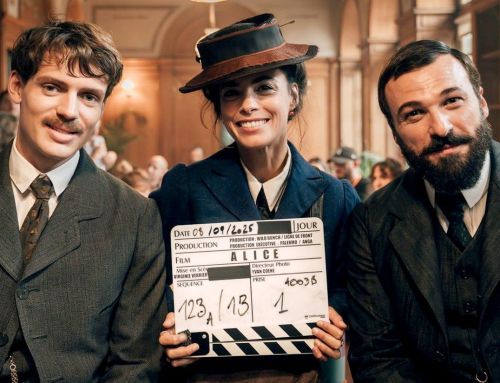‘Inside’ director Vasilis Katsoupis discusses creating an environment for Willem Dafoe to thrive
Willem Dafoe is no stranger to unhinged performances. Perhaps that’s why he plays both creepy and villainous so damn well. But what if a filmmaker were to take that extraordinary talent and energy, and force the Oscar-nominated actor to act alone, essentially portraying a character who is penned up?
That’s the starting point for “Inside,” which sees Dafoe’s art thief Nemo become trapped inside a Manhattan penthouse when its security system locks him in. Left alone with priceless works of art—and a busted climate control system that vacillates between freezing to very hot—Nemo gradually becomes unhinged and desperate for help in a one-man show that perhaps only Dafoe could land.
“Inside” is based on a script by Ben Hopkins and Vasilis Katsoupis, and directed by the latter. Katsoupis spoke with Screen Comment via Zoom recently ahead of the film’s New York premiere. Our conversation has been edited for content and flow.
Was this a real penthouse or a set?
It makes me so happy that you asked me that because we were very afraid that people would see that this is a set, not a real house. It is a set. I mean, nobody would give us a penthouse in New York to destroy. [laughs]
It was a set we built in Cologne, Germany, in one of the biggest studios in the world—the tallest one.
So not actually in New York.
The whole cityscape, the skyline that you see from the windows, was a huge projection. For me it was very important, because this is what I promised to Willem: that I would make the perfect environment for him to be in and to thrive.
Do you have a theater background? Because “Inside” feels almost like a one-man play.
I have no theater background at all. I have some documentary background that helped me because we shot chronologically—and I like to observe. By observing, getting my footage, I can use it in my edit to get the story out.
But don’t forget that Willem has this amazing theater background, so that also helped his character and his performance. But it looks quite theatrical, as you say.
How long was your shoot?
We shot 32 days [over] six weeks during the pandemic and during a lockdown situation.
When was that?
We started late April 2021, and we finished end of June.
Why was there such a gap before it got to theaters?
It had lots of time in postproduction, but I don’t know what the delay was [or] when was the correct time for this to go out to the audience.
As the film plays out, you have to wonder if Nemo is losing his mind or is something supernatural happening to him. Was that ambiguity part of what attracted you to telling this story?
I don’t know. I don’t really like to dictate things to my viewers and audiences. I really want to give clues for them to connect [and] everyone to have their own way of experiencing this film.
And also to start a conversation afterwards because I believe it’s the best achievement in a film: to start conversations, to stick in your mind, and to think of it later in the day [rather than] just going to watch it for entertainment purposes.
What films influenced you here?
The biggest was “All Is Lost.” Funnily enough, I met [‘All Is Lost’] director [J.C. Chandor] yesterday at our premiere. We rushed up and said, “Thank you for your film, because we studied it.” We started a very frank conversation about how these two films have a common language.
I would also argue [in favor of] “Castaway.” I mean, it’s this premise of Robinson Crusoe, you know. And instead of those stories of being on an isolated and remote island, to put it in the middle of civilization in a very busy metropolis that my hero, he looks at the city every day, he looks at life passing by him. But nobody comes to help you. So, I think it’s more elevating the loneliness of this person.
What direction did you give Willem Dafoe?
Our conversations started very early from the script. It was a very organic experience.
I promised him that we had a beautiful little script that we knew would make a nice and beautiful movie. What I promised him is I would make it in an amazing environment, the correct environment for him to come and expand this.
We shot so many things that were not scripted. Things that were coming to our heads each day by discussing different reactions. Things that we were improvising. So I would say that there’s a very big percentage in the film that was not in the script.
Also the whole idea of the script is that it gave you this freedom as well—instead of being a script that is very, very specific and dictating the whole. Shooting chronologically was another luxury that we had, but we couldn’t film in any other way because everything was destroyed on the set day by day.
This gave us an amazing way of working together and turning this character into what you see.
“Inside” opens in select theaters March 17.







